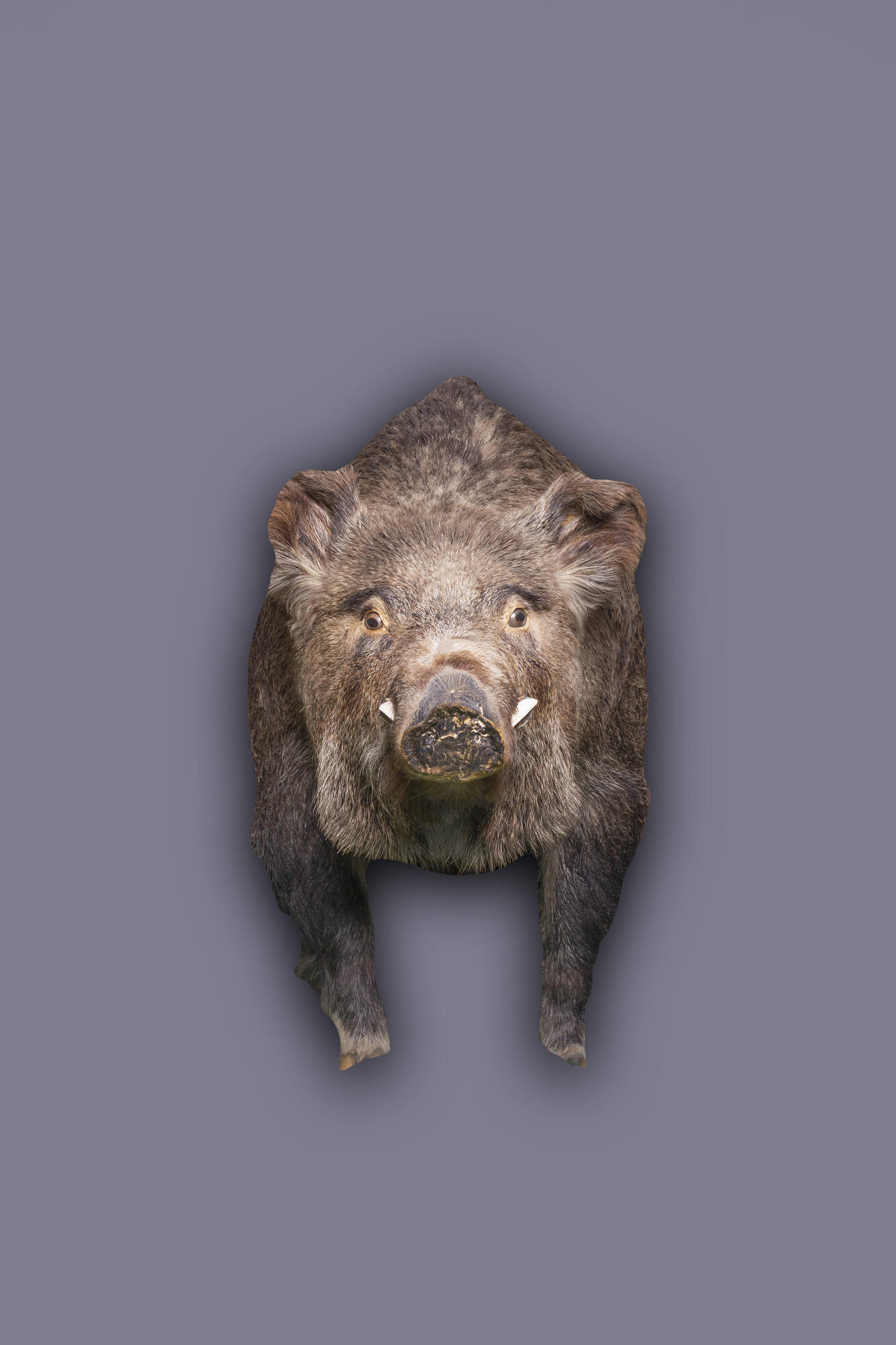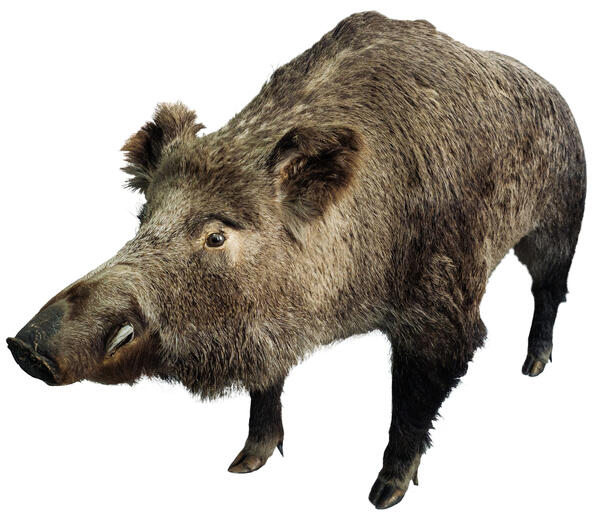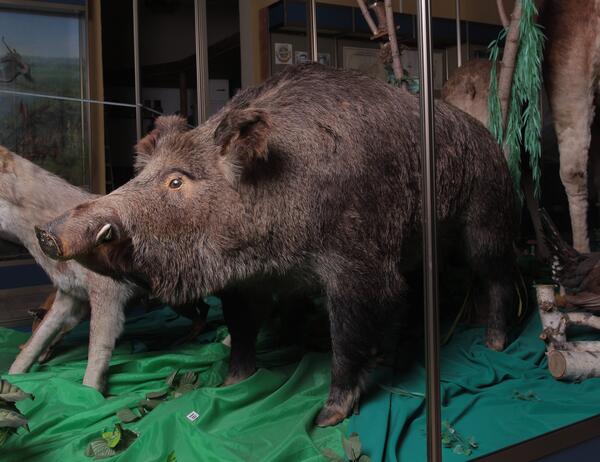The wild boar is a mammal from Artiodactyla order, the Suidae family, and the Sus genus (lat. Sus scrofa).
The wild boar is the ancestor of the domestic pig. Man domesticated it about seven thousand years ago. In Old Rus this animal was called vepr, which means “ferocious”. A boar’s body length can reach 175 cm, height at withers — up to 110 cm, the weight of an adult boar is up to 300 kg. A male is much larger than a female.
The head is elongated and wedge-shaped, the nose has a cartilaginous disk — “a pig’s snout”, the eyes are small and the ears are straight. The body is powerful, the neck is massive, the legs are short and the hooves are flattened. A boar’s tusks are one of its peculiar features. Adult male’s ones reach 20–25 cm in length. The tusks are a defense tool, and the wild boar also digs the ground with them in search of food. Wild boar’s hair is coarse, hard and bristly. It is dark brown in winter and dark gray in summer. Piglets have longitudinal light stripes. In winter, the coat becomes considerably thicker and a warm undercoat grows.
The wild boar is an omnivore. It eats rhizomes and bulbs of plants, fallen fruit, nuts, acorns, worms, and insects. Wild boars can eat small animals, such as rodents, snakes, frogs, chicks, and their young ones, as well as birds’ eggs.
Wild boars live sedentary lives and stay in small groups, joining in larger herds in winter.
There is a strict order among animals; an adult boar is the leader and all the others obey him. Wild boars are good swimmers; they can swim across small rivers and run very fast. These animals have excellent hearing and sense of smell, but poor eyesight. Once a year, females give birth to 3 to 10 piglets. For them, the mother builds a warm nest in which the piglets spend the first weeks of their lives. Later, they accompany their mother and learn to get their own food.
The adult boar has few enemies. They are primarily adult wolves and, in the Far East, tigers as well. When defending or attacking, boars hit with such quickness and force that few enemies can resist and stay unharmed. Females selflessly protect their young ones.
The wild boar is the ancestor of the domestic pig. Man domesticated it about seven thousand years ago. In Old Rus this animal was called vepr, which means “ferocious”. A boar’s body length can reach 175 cm, height at withers — up to 110 cm, the weight of an adult boar is up to 300 kg. A male is much larger than a female.
The head is elongated and wedge-shaped, the nose has a cartilaginous disk — “a pig’s snout”, the eyes are small and the ears are straight. The body is powerful, the neck is massive, the legs are short and the hooves are flattened. A boar’s tusks are one of its peculiar features. Adult male’s ones reach 20–25 cm in length. The tusks are a defense tool, and the wild boar also digs the ground with them in search of food. Wild boar’s hair is coarse, hard and bristly. It is dark brown in winter and dark gray in summer. Piglets have longitudinal light stripes. In winter, the coat becomes considerably thicker and a warm undercoat grows.
The wild boar is an omnivore. It eats rhizomes and bulbs of plants, fallen fruit, nuts, acorns, worms, and insects. Wild boars can eat small animals, such as rodents, snakes, frogs, chicks, and their young ones, as well as birds’ eggs.
Wild boars live sedentary lives and stay in small groups, joining in larger herds in winter.
There is a strict order among animals; an adult boar is the leader and all the others obey him. Wild boars are good swimmers; they can swim across small rivers and run very fast. These animals have excellent hearing and sense of smell, but poor eyesight. Once a year, females give birth to 3 to 10 piglets. For them, the mother builds a warm nest in which the piglets spend the first weeks of their lives. Later, they accompany their mother and learn to get their own food.
The adult boar has few enemies. They are primarily adult wolves and, in the Far East, tigers as well. When defending or attacking, boars hit with such quickness and force that few enemies can resist and stay unharmed. Females selflessly protect their young ones.





